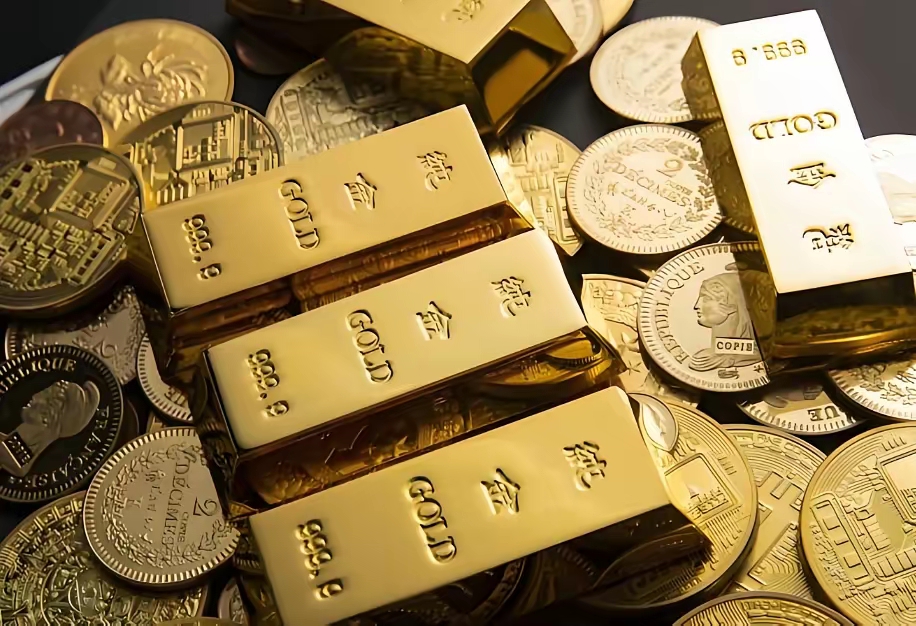
When the London gold spot price fell from a high of $4038.96 per ounce to $3972.15 per ounce in just one week, and rebounded more than $30 the next day, the domestic gold T+D experienced a volatile market trend of "first suppression and then rise". This price fluctuation across the international market has already exceeded the range of ordinary commodities. As a special asset that combines monetary, commodity, and financial attributes, every movement of gold reflects a profound change in the global economic landscape. The core logic behind this severe price fluctuation is the interplay of multiple forces, from the expected restructuring triggered by the shift in Federal Reserve policies to the intertwined game of geopolitical risks and market speculation.
The core driving force of gold price fluctuations has always been closely linked to the US dollar interest rate system, and the Federal Reserve's policy shift is the "first variable" that stirs up the market. In October 2025, the Federal Reserve announced its second 25 basis point interest rate cut of the year, which should have been a positive factor in boosting gold prices - after all, there is a classic inverse relationship between US dollar interest rates and gold, and a decline in interest rates will reduce the opportunity cost of holding gold. However, the actual market trend shows a trend of "good news landing but bad news". After the announcement of the interest rate cut, London gold fell by 0.86% on the same day, confirming the market rule of "expectation first".
The root of this phenomenon lies in the early realization of market expectations and policy realities. Even before the interest rate cut was implemented, the lower than expected CPI data and weak unofficial employment data in September in the United States had pushed the probability of a rate cut in October to a near certainty level of 98.9%. This strong expectation led to the early completion of the upward overdraft of gold prices in the first half of October, soaring from the $3300/ounce range to $4300/ounce, with an increase of over 30% in two months. When policies ultimately meet expectations rather than exceed them, the selling pressure of profit taking naturally triggers a price correction.
But in late October, there were signs of easing in international trade tensions, and the cooling of geopolitical conflicts led to a rebound in market risk appetite. Safe haven funds began to withdraw from the gold market and shift towards risky assets. The combination of this emotional shift and technical correction resulted in a significant one-day pullback in gold prices on October 28th, with some gold funds experiencing a decline of over 3.6% on the same day. The number of daily transactions surged to 23179, indicating the urgency of capital outflows. However, as the risk of a subsequent US government shutdown emerged and market risk aversion rose again, gold prices quickly rebounded from $3920 per ounce to $4040 per ounce, with a rebound of over 3% within 24 hours.
If policy and geopolitics are the underlying logic of volatility, then capital flows and changes in supply and demand are the "catalysts" that amplify volatility. In this fluctuation of gold prices, the promotion of quantitative trading and leveraged funds is particularly evident. Data shows that during a sharp drop in gold prices in October, programmatic trading accounted for 43% of the day's trading volume, a surge of 27 percentage points from usual. The concentrated selling of algorithmic trading in the $4050-4100/ounce range directly led to a cliff like drop in prices. The "herd effect" of this high-frequency trading makes short-term fluctuations far exceed the reasonable range supported by fundamentals.
The drastic fluctuations in gold prices are essentially a concentrated reflection of multiple contradictions in the global economic and financial system: the uncertainty of the Federal Reserve's policy shift, the complex and volatile geopolitical situation, and the excessive speculation in financial markets, all of which together constitute the "driving force" behind this market trend. For investors, this volatility breaks the inherent perception that "gold is a low-risk asset" - data shows that the long-term volatility of gold is not much different from that of the S&P 500, and it also has the attribute of a "risk asset" in the context of a large-scale influx of funds.
From a more macro perspective, the volatility of gold prices reflects the profound adjustment that the global monetary system is undergoing. Against the backdrop of challenges to the US dollar credit system and geopolitical restructuring, the value of gold as the "ultimate means of payment" has been re examined. In the short term, the policy trends of the Federal Reserve in December, the progress of geopolitical conflicts, and the flow of institutional funds will continue to dominate the price trend; In the long run, the adjustment of reserve structure by global central banks, the long-term trend of inflation, and changes in the international monetary landscape are the core logic that determines the value of gold.
This price fluctuation is both a risk warning and a cognitive opportunity. It reminds us that in the uncertain global market, there is no absolute "safe boundary" for any asset. Only by penetrating the fog of short-term fluctuations and grasping the evolution of underlying logic can we maintain rationality and composure in market games. The value of gold is never limited to the fluctuations in price numbers, but rather lies in the signals of the times it serves as an economic barometer.

Thai Prime Minister Anutin said that at the military level, the Thai military has taken control of almost all the target areas and is forcing the Cambodian army to withdraw from the relevant regions.
Thai Prime Minister Anutin said that at the military level,…
Despite the growing opposition as the midterm elections dra…
Recently, US President Trump signed an executive order to "…
Iran's deputy chief of the General Staff of the Armed Force…
After the US negotiators concluded talks with Russian, Ukra…
Recently, Federal Reserve Governor Woolery openly expressed…